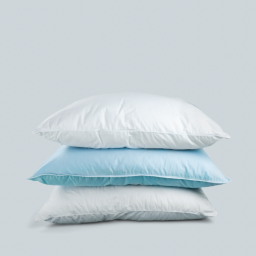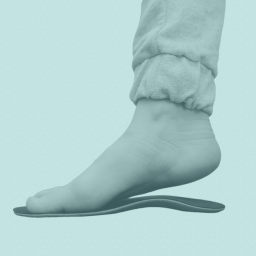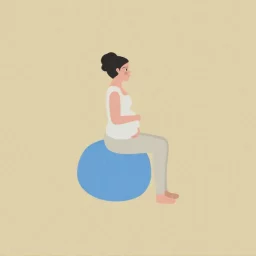Low Back Pain
Do you experience, or have you experienced back pain in the past? You’re not alone. Back pain, specifically low back pain, is common. Approximately 80% of adults will deal with low back pain at least once in their lifetime. It can impact almost every aspect of your daily living. From your workday to your workouts, low back pain can get in the way. Tasks as simple as bending over to put on your socks, or sitting in a meeting can become huge challenges when you have back pain. In Canada, low back pain has a significant impact on work-related disability as well as health care costs.
Low back pain (LBP) is the leading cause of disability worldwide and the most common complaint treated by chiropractors. Musculoskeletal (MSK) conditions, like back pain, are disorders affecting the muscles, bones and joints. Every year in Ontario, MSK conditions cost taxpayers over $2 billion dollars.
Low back pain presentation
Low back pain presents itself in many ways. It can range in intensity, pain patterns and in frequency. One person may experience a constant dull ache while the next may feel a sharp and sudden sensation. Low back pain can be localized, but it can also refer to or radiate into the buttocks, pelvis and legs. Low back pain can begin suddenly as a result of an accident or injury. It can also develop and build over time due to repetitive strain, chronic poor posture and age-related changes in the spine. The causes of low back pain are multifactorial. There are often physical, social and psychological factors that contribute to the pain we feel.
Maigne’s syndrome is an often-overlooked source of low back, hip, and groin discomfort. It is a condition commonly associated with those who have low back pain, although it doesn’t always present as back pain. Let’s go over a little spinal anatomy before we lift the lid on Maigne’s Syndrome.
The spine
From a side view, our spines are not straight and actually curved in 4 places. This elongated S-shaped curve allows for flexibility as well as support to our body. These curves keep us balanced and help us stand upright. Our spinal curves give our spine spring-like properties, allowing for shock absorption. If our spine was straight from top to bottom, it would likely experience a lot of stress and tension. It would take on significant wear and tear from constant vibration, twisting, and compression.
Maintaining our spinal curves is important for optimal function and our activities of daily living impact the shape of our spine. We live in a world where everything happens in front of us. The use of our computers, laptops, tablets, and phones has us sitting and hunching for extended periods of time. This can contribute to too much or more often, not enough mobility, which in turn can cause altered function and pain.
Spinal dysfunction leading to pain is common at transitional sites in the spine, like the thoracolumbar junction (TLJ- where the thoracic spine turns into the lumbar spine). In the thoracic spine, joints can rotate more freely as the facets are aligned in a frontal plane. In contrast, the lumbar spine has limited rotation as the facet joints here are aligned in a sagittal plane. The TLJ is an area of the spine where rotation and sustained flexion impose stress on this area. Prolonged flexed postures and sedentary behaviours like those in front of screens can lead to Maigne’s Syndrome.
Maigne’s Syndrome
Maigne’s Syndrome typically presents with primary hip and groin pain, occasionally accompanied by LBP. Symptoms may also refer to the lower abdomen, pubic region, iliac fossa, iliac crest, buttock and genital area—irritation of nerves at TLJ results in radiating pain along the path of cluneal nerves. Degeneration of the facet joints in and around the TLJ may also contribute to nerve irritation. Maigne’s Syndrome is also referred to as thoracolumbar junction (TLJ) syndrome, lumbodorsal syndrome, and posterior ramus syndrome.
Maigne’s Syndrome is believed to be a relatively common spinal disorder but is often overlooked by clinicians. One of the main reasons Maigne’s Syndrome is missed is that the pain associated with the condition rarely presents at the source of dysfunction. Instead, the pain is referred along the length of the affected nerve and presents elsewhere in the body, usually away from the spine in areas like the hip, outer thigh and groin. Hip and groin pain can often be a classic symptom of Maigne’s syndrome.
With Maigne’s syndrome, the most common pain symptoms include:
- Pain in the lower back region, typically around the SI joint
- Pain in the groin or genitals
- Lower abdominal pain
- Pain in the pubic bone
- Pain in the lumbo-sacral region
Diagnosis
There are 4 diagnostic criteria to identify Maigne’s syndrome. A positive diagnosis can be made with any combination of the following criteria:
- Pain in the lower back, sacroiliac, groin, genitals, outer thigh and lower abdominal region(s).
- The pain is usually unilateral (one side), although bilateral (both sides) cases have been known to occur. The pain is chronic and constant, although it may vary in severity. It can usually be provoked on clinical examination by palpating the facet joints.
- Imaging rarely helps in finding a definitive cause of the pain. Where degeneration is found, this can often lead to false diagnoses and/or unnecessary surgery.
- Pain can be relieved by the injection of a local anesthetic into the offending tissues. It is this criterion that often convinces clinicians of the diagnosis, although there is naturally a lot of reluctance from clinicians to perform the procedure without a definitive diagnosis. This represents a significant clinical dilemma.
Diagnosis and First-line Treatment
Many people with Magine’s Syndrome unnecessarily suffer from pain for long periods of time due to a lack of an accurate diagnosis. These patients usually try many therapies to address their pain and dysfunction with limited success. A thorough patient history and clinical examination are key to addressing dysfunction at the TLJ. Spinal manipulation reduces pain and alleviates symptoms of Maigne’s Syndrome. Soft tissue techniques to release adhesions of the cluneal nerves are also an effective treatment. Mobilization of the TLJ optimizes the function of the facet joints and decreases the chances of restriction and irritation. Active and passive stretching diminishes swelling and pressure keeps nerves free of adhesions.
In cases where first-line MSK treatments like chiropractic and physiotherapy have limited effect, the next line of treatment to address cluneal nerve entrapment could include an anesthetic nerve block and anti-inflammatory steroid injections. If these treatment approaches are unsuccessful, then a surgical consult may follow.
Maigne’s Syndrome commonly presents as unilateral pain in the lower lateral region of the spine, groin pain and/or an aching or painful sensation that radiates above and along the pelvis and into the pubic region, and is occasionally accompanied by LBP
How we can help
Back pain is one of the most common reasons prompting patients to seek medical attention. There are many treatment options for those suffering from back pain, which include: chiropractic, physiotherapy, massage therapy, exercise, and acupuncture. Most people experience low back pain at some point in their lives.
As experts in MSK health, chiropractors can help Canadians better manage their MSK pain while also reducing the use of unnecessary painkillers. Back pain is a complex problem and a significant contributing factor to long-term disability, absence from work and a significant economic burden to all Canadians.
If back pain is keeping you from going about your day-to-day and keeping you on the sidelines of active living, consider chiropractic. Most people seeking our services are able to see a chiropractor for a consultation and assessment on the same day or the day after.
A healthy spine contributes to a pain-free, active and healthy lifestyle. If you, or someone you know, has questions about low back pain, contact us and schedule an appointment to get answers to your nagging back problem. Contact CURAVITA Health Group today to book a comprehensive assessment. Our model of patient-centred care in a collaborative multi-disciplinary environment will ensure you get the right care, at the right time and in the right place. Book online or call our Byward Clinic at 613-860-8600 or our Glebe Clinic at 613-237-9000 today.
















